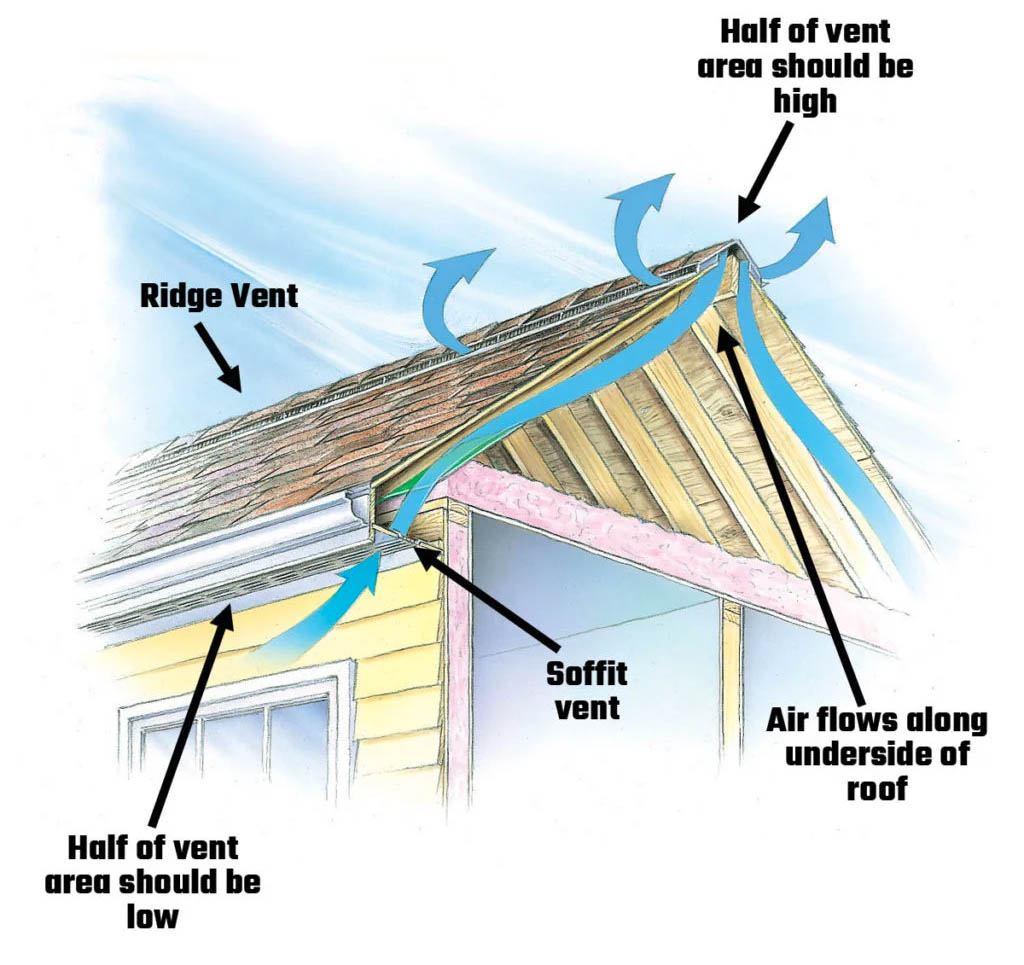One of the most talked about areas of any home remodel or new construction is attic insulation and venting. The debate lives on even today with all the modern day advancements and technology. so let’s dig into this a little bit to see what’s what.

What about ventilation? The better you ventilate your attic the longer your roof will last, right? Right! If you don’t ventilate enough moisture will build up and decrease the efficiency of your insulation. Without proper ventilation and insulation, you could end up having roof dam problems that will shorten the life of your roof. So having proper attic ventilation is a great idea and an important one. One way of making sure you have the best ventilation is to install a ridge vent in your attic the next time you need to replace your roofing shingles. A ridge vent rides along the top of the roof all the way along with the ridge forcing the warm air that rises out through the top of your roof at the peak. The warm air has nowhere else to go. Ridge vents are far superior to box or hood vents that are placed near the top of the roof along the back of the house as they capture air from both sides of the roof.
So how much ventilation is the right amount? The standard rule of thumb is a ration 1:300 which means for every 300 feet of ceiling you need one square foot of attic ventilation. The problem with this calculation is that one square foot of box or hood vent usually falls short and is less than what is needed. Can you accomplish this with a ridge vent and the answer is yes! It’s much easier to meet the ratio with a ridge vent.
But…! Yes, there’s always a but.
Many remodelers and builders feel that insulation is more important than ventilation and they’re probably right. The better 
Many homeowners feel that the reason the attic is warm in the winter is that the heat is rising from the furnace, through the ceiling, and into the attic and that the attic isn’t properly vented. This is usually not the case. The sun is warming up the attic more than the furnace and by adding more insulation you can solve many of these problems. Most effective ventilation uses a ridge-and-soffit continuous ventilation system, but even these designs can vary from roof to roof. You can talk to your Roofing Contractor in Omaha about your concerns and make sure they fix it the way you want.
The bottom line is this. Ventilation in your attic is important and the experts at Exterior Renovations can come out and inspect your attic to make sure you are doing everything you can to protect your roof, insulation, and have proper ventilation as this is one of the most important aspects of your home.

